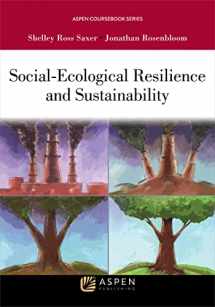
Social-Ecological Resilience and Sustainability: An Extended Simulation Course (Aspen Coursebook Series)
Book details
Summary
Description
Social-Ecological Resilience and Sustainability by Shelley Ross Saxer and Jonathan Rosenbloom is designed to help students understand and address new, changing, and complex economic, environmental, and social systems. This book introduces resilience and sustainability as analytical frameworks and illustrates how these concepts apply in various contexts: water, food, shelter/land use, energy, natural resources, pollution, disaster law, and climate change. The first two chapters (Part I) provide students with a conceptual foundation to explore the interdisciplinary nature of resilience and sustainability and the meanings of, complexities embedded in, and the overlap and differences between these frameworks. Each of the remaining eight chapters (Part II) views resilience and sustainability in a specific law and policy context. Strategically placed throughout Part II, the authors describe eight useful tools -- "Strategies to Facilitate Implementation"--to help identify, assess, integrate, or utilize resilience and sustainability as analytical frameworks.
Key Features:
- A two-part approach that first provides students with a conceptual foundation and then allows students to view resilience and sustainability in eight law and policy contexts (described above)
- Numerous graphics throughout to illustrate concepts, depict events described, and otherwise enliven the content
- Case studies that examine human decisions that led to unsustainable and non-resilient systems and societies
- New and innovative ways to explain complex systems and in turn rethink traditional notions of law and policy


We would LOVE it if you could help us and other readers by reviewing the book
Book review



